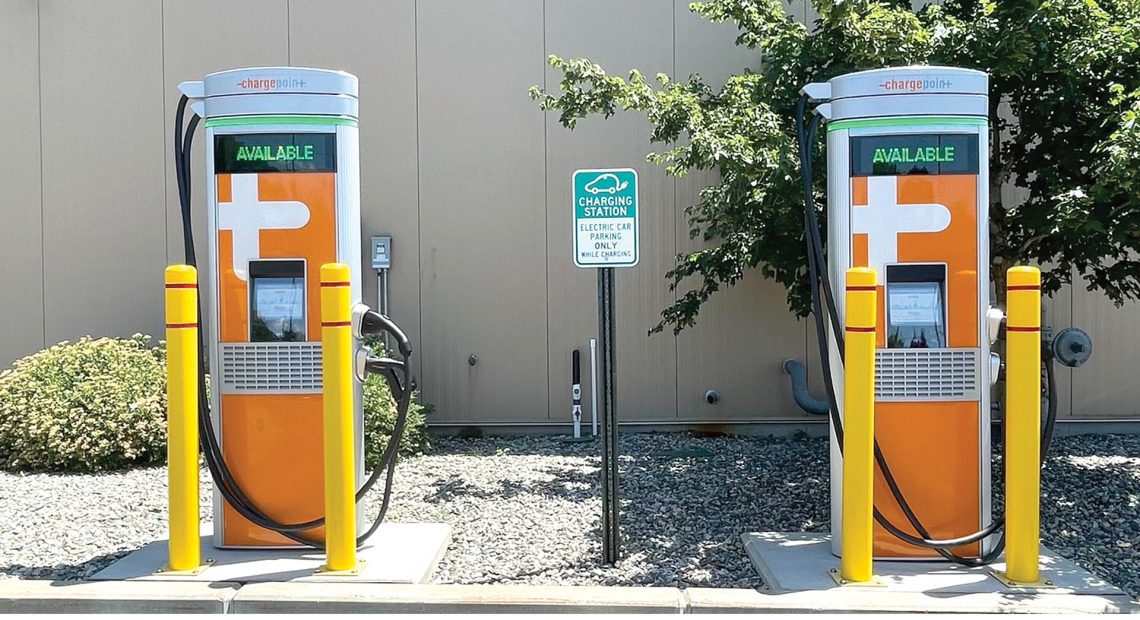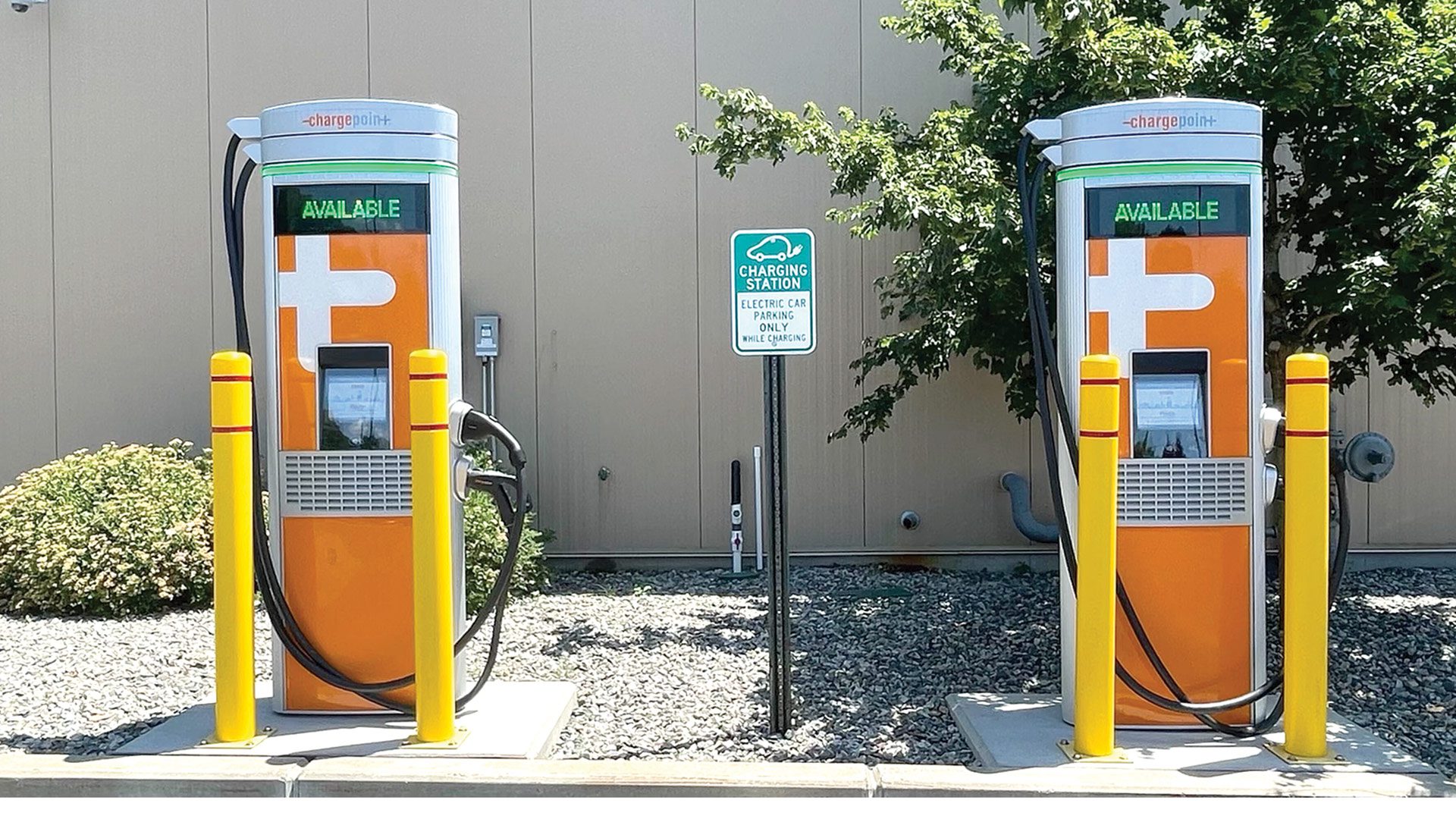
Electric-vehicle Charging Stations Proliferating Across the Country
Power Play

Gary Rome plans to more than double the charging stations at his Hyundai dealership from the current six.
Gary Rome understands the appeal of electric vehicles.
Start with the long-term fuel savings. At a time when gas still costs around $3.50 per gallon, he said an electric charge might cost around $1.25 for the same number of miles.
“It’s a good deal for someone who drives a lot,” said Rome, owner of Gary Rome Auto Group, which has a Hyundai dealership in Holyoke and a Kia dealership in Enfield, Conn. “As gas prices continue to be as huge as they are, the interest in electric vehicles is not going to wane.”
In addition, “the technology on the car is advanced. The performance is spectacular, and the response, the acceleration, is far superior on some of these electric vehicles as compared to ICE [internal combustion engine] vehicles.”
So, what — besides an initial sticker price higher than the average gas-powered vehicle — might make consumers hesitant to go electric? In many cases, it’s uncertainty about where they’ll power up.
“The infrastructure is still very immature; it needs to be developed,” Rome said. “There’s a lot of money out there from the federal government to support this, but it’s not happening at a rate we would like.”
The issue, for most electric-vehicle (EV) owners, isn’t charging at home; even level-1 chargers running overnight in the garage, at about four miles of range per hour, will give most drivers what they need to get around the next day, and Rome said local utilities are offering financial incentives to install level-2 chargers, which offer more than 30 miles of range per charge hour.
No, the big question, for many, is where to charge when away from home. And that landscape is improving, if not quite at the pace Rome and others would like.
“The infrastructure is still very immature; it needs to be developed. There’s a lot of money out there from the federal government to support this, but it’s not happening at a rate we would like.”
On the federal level, the bipartisan infrastructure bill passed last year invests $7.5 billion in electric-vehicle charging, $10 billion in clean transportation, and more than $7 billion in EV battery components, critical minerals, and materials.
Meanwhile, the Biden administration has committed to building out a national network of 500,000 EV chargers by 2030. In support of this goal, the Department of Transportation announced the National Electric Vehicle Infrastructure program, a $5 billion initiative to create a coast-to-coast network of EV chargers focused on major highways that support the majority of long-distance trips.
The idea behind this national network is to give drivers confidence they can always find a place to charge, as well as jump-starting private investment in charging infrastructure and electric vehicles and supporting the administration’s goal of having at least 50% of vehicle sales to be electric by 2030.
Confidence Game
The confidence factor is important; a AAA survey last year revealed that 25% of Americans say they are likely to buy an electric vehicle for their next auto purchase, with Millennials leading the way at 30%. Of those, 77% cite savings on fuel costs as the top reason.
However, consumer hesitation surrounding range and accessibility to charging points continues to hold many people back. The top objections to buying electric in the AAA survey included the high initial purchase price (cited by 60%), but also concern there are not enough places to charge (60%), concern about running out of charge when driving (58%), worries about the vehicle being unsuitable for long-distance travel (55%), high cost of battery repair or replacement (55%), and inability to install a charging station where they live (31%).
Clearly, some version of worry about not being able to charge the vehicle is a top concern.
Even as the range of EVs improve, “the deeper issue with range anxiety is that it’s going to take more than just improving how far an electric vehicle can go to convince people to make the switch,” said Greg Brannon, AAA’s director of Automotive Engineering and Industry Relations.
And even at home, not everyone can charge. While most electric vehicles come with a 120-volt, level-1 AC charger that plugs into a standard household electrical outlet, people living in dense cities or multi-family housing often find that public charging stations are the only option. So building the charging infrastructure not only along highways, but within cities is key to boosting consumer interest in electric vehicles.
Locally, auto dealers are answering the call. JM Electrical, which has installed thousands of EV charging stations across New England, announced it will install two level-3 charging stations, spare capacity for an additional one in the near future, and three level-2 charging stations at Marcotte Ford in Holyoke. In total, the charging bank, expected to be completed this fall, will have the ability to power up to 10 cars.
Level-3 chargers can bring a battery to 80% charge in under a half-hour. Marcotte is one of the first Ford dealerships in Western Mass. to officially roll out these new EV chargers in efforts to continually scale EV volumes in the region.
Mike Filomeno, Marcotte’s general manager, said Ford is committed to an electric future and understands the need for charging access. “There is demand, but we need the infrastructure to support it. You can’t sell vehicles that don’t have that. And what makes people comfortable is knowing they can get their vehicles charged everywhere.”
Station by Station
On a national level, the Biden administration says investments are paying off, with EV sales tripling and the number of publicly available charging ports growing by at least 40% since the start of 2021. There are now more than 3 million EVs on the road and more than 130,000 public chargers across the country.
Further accelerating the buildout of a reliable charging network, companies including Tesla, General Motors, EVgo, Pilot, Hertz, and BP, among others, are announcing commitments to expand their networks by thousands of public charging ports in the next two years, using private funds to complement federal dollars and putting the nation’s EV charging goals even closer within reach.
Rome’s Holyoke dealership now boasts six charging stations, of both the level-2 and level-3 variety, and he wants to install about eight more. He noted that Hyundai is fully committed to the EV movement, breaking ground six months ago in Georgia on a $5.8 billion production facility for electric cars and batteries.
“They see this as a very important part of our sales,” he said, “and they’re putting their money where their mouth is.”





